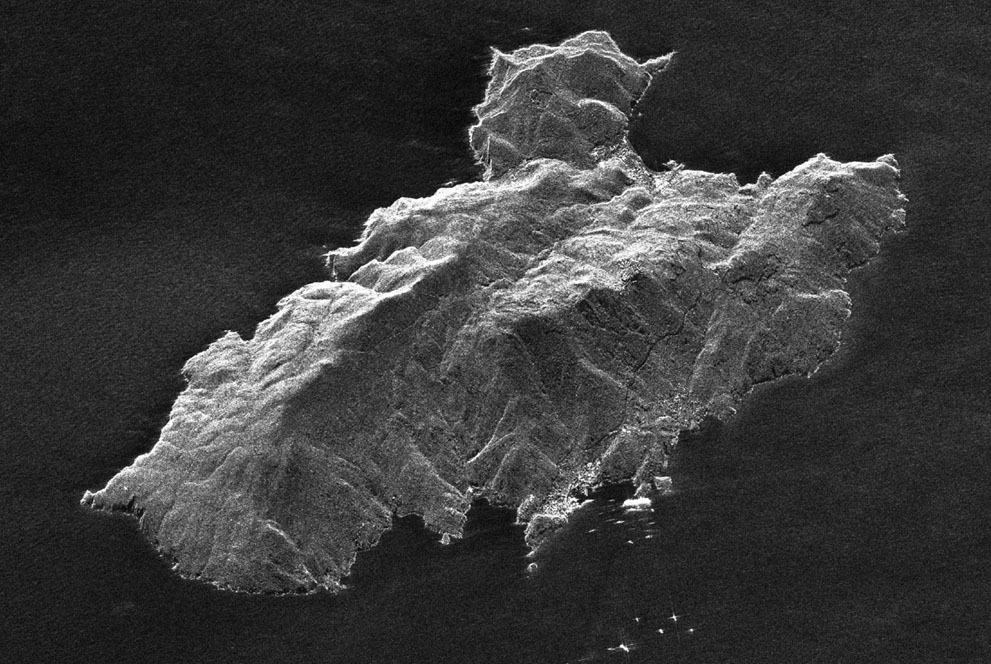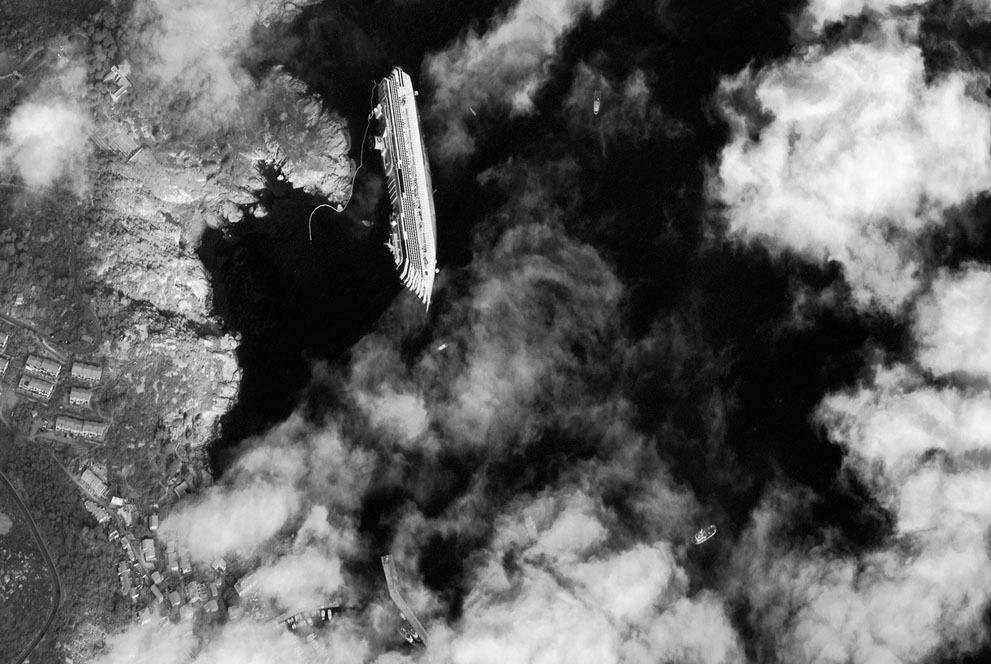Scientific imaging plays a limited role in photojournalism, but a role nonetheless. X-rays, ultrasonic images, brain scans, electron microscopy, nanotechnologies, and other marvels reveal the many worlds underneath the surface of things, while telescopes peer ever more cannily into deep space. So it is that you might wonder what is being show in this photo which was released last week. Protoplasm? A virus? A lesion? Neural excitation for the smell of loam?
Or perhaps a satellite photograph of Isola del Giglio and the cruise ship Costa Concordia. The ship is the bright smudge in the lower right quadrant, and the small bright spots below it are other craft. The photo was taken by the Italian Space Agency (A.S.I.). (Those who like to sneer at Europe might want to ponder that concept while chewing on their freedom fries.) Although I don’t want to do anything to diminish the suffering and other costs associated with the disaster, this photo nonetheless provides an object lesson in the limitations of seeing everything to human scale.
Even though I knew I was looking at photos about the ship running aground, I couldn’t help but see this image as something microscopic. It looked too much like a scrap of the cellular world, or perhaps some bit of flotsam in a laboratory–“Scientists develop artificial skin,” or something like that. And when I realized I was seeing a topographical image, it seemed more like a living thing that a promontory of rock. And although a dot on the map and miniscule in comparison to other landforms, it dwarfs the ship, which then seems to be something less than a piece of lint in the natural order of things, which it is. The image evokes an enormous, living planet, itself part of a cosmos that flows endlessly inward and outward. Human life is part of that mystery but also microscopic within that outer world.
Perceptions of magnitude have a highly elastic quality within human consciousness. Events can loom large and then whoosh back to the vanishing point is a second. You are furious with a family member–until you learn the terrible news, and then everything changes. The school board election is a disaster, until the phone rings late in the night. The deficit is a national crisis, until tomorrow when it disappears from view. Pain is real no matter what, but those of us watching at a distance have an opportunity to think about what we consider important.
But let’s not get too serious, either. Here’s another satellite image, but one that transports us into the context of surrealism. The ship is visible as a ship but cockeyed, laying on its side, and looking as if it is floating in space. The land form is becoming more familiar as well and less attractive for that: lumpy structures clutter the terrain while any sense of of the whole has been obliterated. The ship dominates the scene, but as if it were a toy or a dream. The vessel’s importance is implied but also undermined. Again, we are left to ask, well, what really should be important here?
I think that it is precisely because humanity is so small in the great scheme of things that we should be particularly attentive to caring for one another and otherwise living well together. You may come to another conclusion, and that is your business. Just don’t think that the difference is as big as it appears at ground level.
Photograph by ASI/Associated Press and DigitalGlobe/Reuters. These and other photos of the wreck are at Alan Taylor’s In Focus photoblog at The Atlantic; there is some overlap with the archive of the same day at The Big Picture.


Discussion